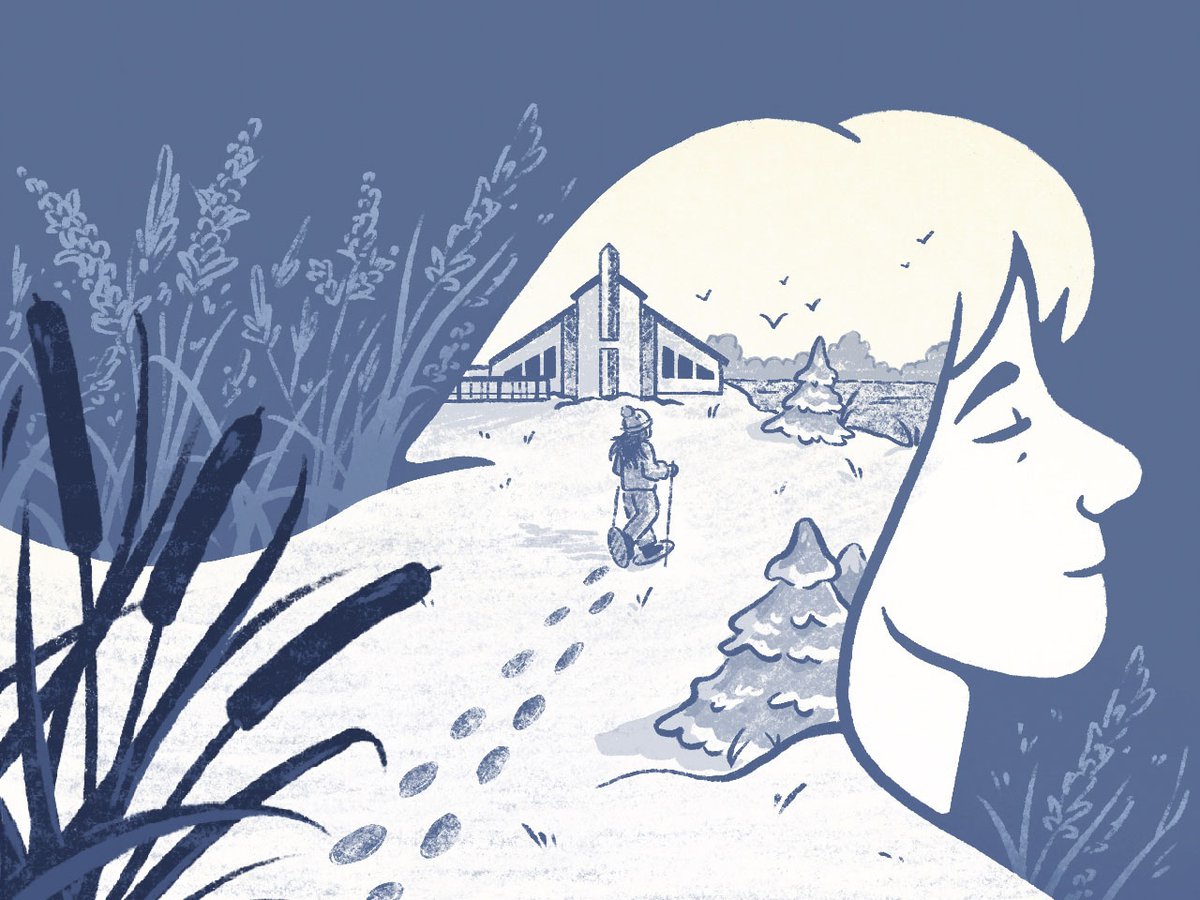I think of Holy Wisdom Monastery as one of the Madison area’s best-kept secrets, despite it having been around for more than 70 years. It sits on 180 acres, some of it woods, some restored native prairie and oak savannah, in the rapidly developing area near Governor Nelson State Park.
The grounds’ serene hiking trails offer stunning views of Lake Mendota. On a recent visit I saw deer, wild turkeys, a red-tailed hawk and migrating buffleheads enjoying a 10,000-year-old glacial lake on the property. This refuge wasn’t created by accident. Hospitality and care for the earth are part of Holy Wisdom’s core values and make it a perfect spot for retreats, both group and private. In 2025, the monastery is hosting four retreats focused on the wisdom of the land.
“The throughline of all these retreats is quiet, time with the land, and time with oneself,” says Pam Shellberg, Holy Wisdom’s director of spiritual nourishment and retreat co-facilitator. “We try not to be too structured. On retreat, the less you do, the more you’re accomplishing. But it’s not ‘more’ in the way we’re trained to think of it.”
The first retreat, Winter Rest, on Jan. 10-11, is full, but looking forward there’s Spring Emergence, April 2-3; Summer Plentitude, July 11-12; and Fall Fallowing, Nov. 21-22. Solo retreats are open throughout the year; participants stay overnight in the guest house or in hermitages nearby in the woods.
With each retreat there’s the chance to explore the land as well as time for solitude, reading, rest, and contemplative conversations with other participants. Accommodations are simple but cozy and food is prepared on-site.
Amy Alstad will co-facilitate with Shellberg. As director of land management and environmental education at Holy Wisdom, she sees the restored prairie as a central piece of the retreat time. “Healed land is inherently more healing,” says Alstad. “This prairie can be a partner in healing the people who come here. The people who open themselves up to this land are deeply touched by it.”
The idea for these retreats sprang from conversations among Holy Wisdom’s leadership about how rare rest and contemplation have become.
“Rest is a radical notion in a society that more often values productivity, efficiency and commodity, “ says Erin Trondson, executive director at the monastery. And that is “all at very deep costs to the human spirit and to the well being of the Earth.”
Founded by Benedictine sisters in 1952, the monastery began moving to more ecumenical forms of worship in the 1960s and formally became an ecumenical organization in 1999. Over the past two decades, Holy Wisdom has focused on caring for the land. Staff and volunteers have restored more than 100 acres of prairie, recovered a glacial kettle lake that was filling due to sedimentation, and preserved woods, wetlands, and effigy mounds. A number of environmentally minded renovations have taken place to minimize runoff and maximize energy efficiency. The monastery has achieved net-zero status from solar energy it generates. Meals are made daily from produce grown in on-site gardens and at local farms.
You don’t need to book a retreat to visit the monastery. “There are so many ways you can connect with this place,” says Trondson. “You can attend a variety of spiritual groups, or if that’s not your thing, grab a chainsaw and join a women’s land restoration workday or come to a feminist bird club meeting.”


